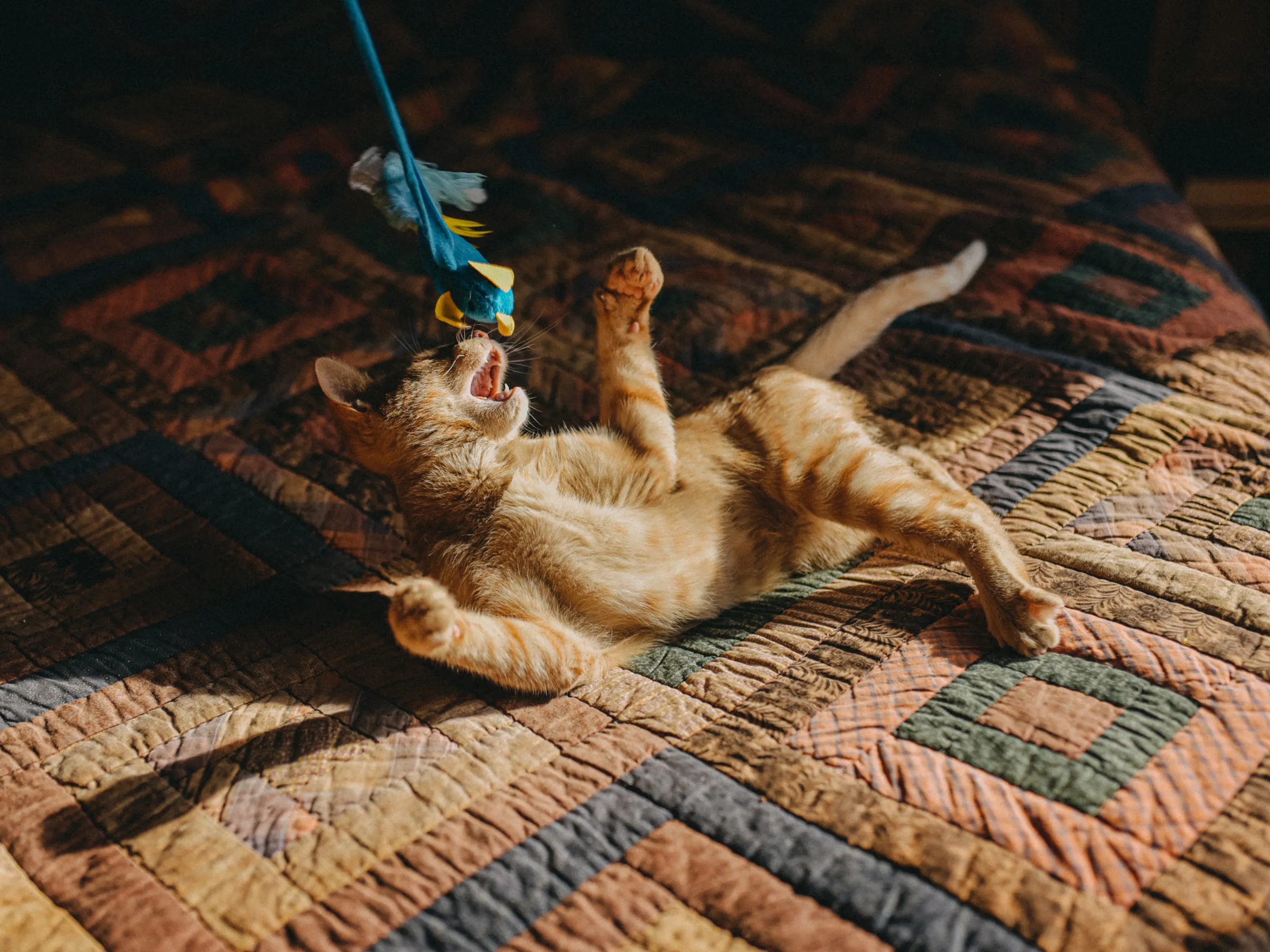Why is my cat so small?

Small cats are cute, but sometimes their diminutive size can raise questions for pet parents. If you’re wondering why your cat is smaller than others, there are several factors to consider, including breed, age, gender, nutrition, and potential medical concerns.
Is My Cat Still Growing?
Young cats and kittens grow rapidly, reaching their full size by around 40 weeks (approximately 9 months old). While most of their growth occurs by 30 weeks, larger breeds like Maine Coons may continue to grow for over a year.
Breed
Different cat breeds exhibit significant variations in size. Some breeds, like Singapura and Munchkin cats, are known for their small stature, while others, such as the Siamese and American Curl, tend to be petite as well.
Gender
Female cats are typically smaller than males, although neutering can influence size, with early neutering potentially resulting in larger cats due to delayed bone growth plate closure.
Nutrition
Proper nutrition is crucial for healthy growth in cats. Kittens require high levels of protein and fats for rapid development, while adult cats need a diet rich in animal protein to maintain their health and vitality.
Medical Concerns
Certain medical conditions, such as intestinal parasites or genetic abnormalities like dwarfism, can affect a cat’s growth and size. Regular veterinary check-ups can help identify and address any underlying health issues.
If you notice that your kitten is not gaining weight and shows other signs of illness, it’s crucial to take them to the vet immediately. Here are a few possible causes your vet may consider for an underweight kitten:
Intestinal Parasites
Gut parasites like roundworms can hinder your kitten’s ability to absorb nutrients from their food. Symptoms may include tummy pain, decreased appetite, a rounded belly, and a dull coat. Fortunately, intestinal parasites can be treated with medication prescribed by your vet.
Fleas
Fleas can drain a kitten’s energy and cause discomfort. Signs of a flea infestation include itchiness, red bumps on the skin, and the presence of fleas in the fur. Treatment usually involves medication from your vet, especially for young kittens, as over-the-counter treatments may not be suitable.
Liver Shunt
A liver shunt is a congenital abnormality where blood flow bypasses the liver, preventing it from performing essential metabolic functions for growth. Diagnosis involves imaging tests like X-rays or ultrasound scans. Treatment may require surgery, and your vet can help develop a suitable plan.
Not Eating Enough
Some kittens may not eat enough due to food preferences or environmental factors. Cats can be picky eaters, and your kitten might prefer a different type of food. Ensure you offer a variety of textures and flavors of commercial kitten food. Additionally, the location of the food bowl can affect your kitten’s appetite. Placing it too close to the litter box or in a noisy area may deter them from eating. If you relocate the food bowl, show your kitten its new location, and always provide fresh food, removing any uneaten portions promptly.
In conclusion, while small cats may be adorable, it’s essential to monitor their growth and overall health to ensure they’re thriving. If you have concerns about your cat’s size or growth trajectory, consulting with a veterinarian is always a wise decision.
Other Medical Concerns
Some medical conditions that affect a cat’s size are more prevalent in older cats. Diabetes and hyperthyroidism are common culprits, both characterized by voracious appetites coupled with sudden weight loss, increased thirst, and frequent urination. Hyperthyroidism may also cause hyperactivity and poor coat condition. If you notice your cat losing weight despite a healthy appetite, it’s advisable to seek a veterinary health check, especially for older cats.
In summary, while we cherish our feline companions regardless of their size, it’s essential to monitor their health closely. If you have a small cat, it’s likely due to factors such as age, breed, or sex, which are typically normal. However, any concerns regarding growth, weight loss, appetite changes, or unusual feeding habits should prompt a visit to the veterinarian for a thorough examination. Nutritional and medical issues can impact a cat’s size and growth, so it’s best to rule out any potential concerns for your pet’s well-being.

What should my kitten or cat weight?
While cats generally range from 5 to 25 pounds and still be fit and healthy, breed plays a significant role in determining their weight. For mixed-breed or Domestic Shorthair cats, weights can vary widely from 5 to 15 pounds. Monitoring your kitten’s growth is crucial during the development phase. You can track their growth by investing in a baby scale and weighing them daily, observing a steep growth curve initially that levels off by around 6 months.
Your veterinarian may provide a kitten growth chart, similar to a baby growth chart, where you can plot your kitten’s growth and ensure they stay within two percentiles of their starting point. On average, kittens gain about 3.5 ounces (100 grams) per week until they’re 6 months old. An average-sized kitten usually weighs about 1 pound (450 grams) for every month of age until 10 months. Males typically weigh more than females.
Even if your kitten was the runt of the litter, they can eat the same diet as their larger siblings and will have a similar growth curve, just on a smaller scale. Watch out for signs of illness and consult your vet if you have any concerns.
Cats generally stop growing around 1 year of age, with larger breeds like Maine Coons or Ragdolls taking a few years to reach full adult size. Growth slows considerably at around 6 months or after neutering. At this point, cats start putting on excess weight as fat rather than longer bones and muscles, necessitating careful diet monitoring. Your veterinary team can guide you on when your kitten reaches their adult body weight and discuss dietary needs accordingly.
